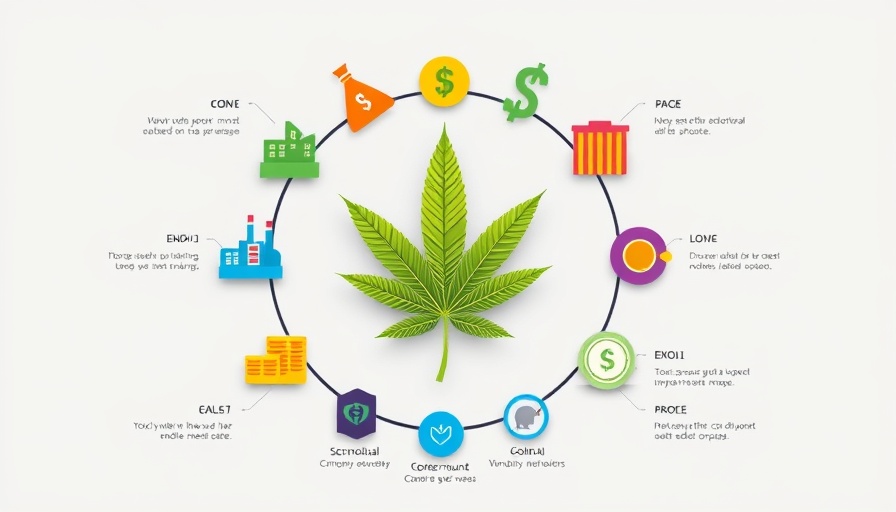
The Rise of Cannabis Tax Revenues in Maryland
Maryland’s cannabis market is blossoming, with a reported $18.4 million generated in tax revenue during the third quarter of fiscal year 2025 alone. This surge follows a tax increase from 9% to 12%, enhancing the state's ability to allocate funds for several critical initiatives.
Strategic Allocation of Funds: Where Does It Go?
The good news transcends just fiscal numbers; the allocation of these funds signifies a strategic approach to community enrichment. Breaking down the overall tax revenue, $3 million is earmarked for the Community Reinvestment and Repair Fund (CRRF), aimed at enhancing community projects potentially impacted by cannabis prohibition. Additionally, every main locale sees support with $429,085 allocated to counties and municipalities, reinforcing local governance.
Moreover, the Cannabis Public Health Fund brings the same amount of funding, which shows a commitment to health initiatives that ensure safe consumption practices and public education regarding cannabis use. Lastly, the Business Assistance Fund will also receive $429,085, promoting entrepreneurship in the cannabis industry where minority businesses could thrive.
Opportunity for Equity in the Cannabis Industry
One pivotal aspect of these developments lies in the potential for transformative change through the CRRF and Business Assistance Fund. Funding initiatives that prioritize social equity applicants and minority entrepreneurs could set a precedent in the cannabis space, addressing historical inequities intensified by prohibition policies. Successful implementation in Maryland could inspire similar measures across other states, creating a wave of social impact.
Striking Balance: Growth Versus Oversight
However, as the cannabis market stabilizes, Maryland policymakers face significant challenges. The need to foster a thriving cannabis economy while managing potential misuses of cannabis—especially among youth—is a delicate balance that can set the tone for other regions. This dual mandate necessitates ongoing discussions about how best to maintain both economic momentum and public health.
Future Predictions: The Path Forward for Maryland's Cannabis Sector
Looking toward the future, stakeholders will need to assess the impact of these financial allocations carefully. Will funds entirely resonate with public needs and address community reinvestment goals? As public revenues swell, the ongoing conversation should center on whether it's more crucial to support market growth or ensure that tax revenues meaningfully benefit local communities.
In this evolving landscape of cannabis culture, voices from all corners, including those directly involved in cultivation, must engage in dialogue about the direction of these funds. With your insights, we can foster a marketplace that thrives and actively promotes equity and health. What are your thoughts on how Maryland’s cannabis tax revenue should be optimized for the greatest public impact? Share below!
 Add Row
Add Row  Add
Add 




Write A Comment